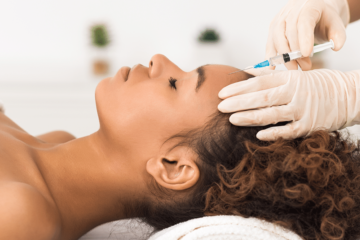Aesthetic dermatology has seen significant advancements in recent years, with innovative treatments and technologies continuously emerging to address a wide range of cosmetic concerns. From non-invasive procedures to minimally invasive techniques, the field of aesthetic dermatology offers solutions to help patients achieve their beauty goals safely and effectively. In this comprehensive guide, we’ll explore the latest trends in aesthetic dermatology, including popular treatments, innovative techniques, and what the future holds for the industry.
Understanding Aesthetic Dermatology
Aesthetic dermatology, also known as cosmetic dermatology, focuses on improving the appearance of the skin, hair, and nails. It encompasses a wide range of treatments and procedures designed to address various cosmetic concerns and enhance natural beauty. Aesthetic dermatologists are trained to perform both non-invasive and minimally invasive procedures that target specific cosmetic issues, such as:
- Wrinkles and fine lines
- Uneven skin tone and texture
- Acne and acne scars
- Hyperpigmentation
- Hair loss
- Excessive sweating
- Unwanted hair
Popular Trends in Aesthetic Dermatology
- Botulinum Toxin (Botox/Dysport/Xeomin):
- Botulinum toxin injections remain one of the most popular cosmetic treatments worldwide. They work by temporarily relaxing the muscles that cause wrinkles and fine lines, resulting in a smoother, more youthful appearance.
- Dermal Fillers (Hyaluronic Acid Fillers):
- Dermal fillers are injectable gels used to restore volume to the face and smooth out wrinkles and folds. They can also be used to enhance the lips, cheeks, and jawline, resulting in a more youthful and rejuvenated appearance.
- Chemical Peels:
- Chemical peels are exfoliating treatments that remove the outer layer of dead skin cells, revealing smoother, brighter skin underneath. They can help improve the appearance of acne, hyperpigmentation, and uneven skin tone and texture.
- Laser Skin Resurfacing:
- Laser skin resurfacing uses laser technology to remove the outer layer of skin and stimulate collagen production, resulting in smoother, younger-looking skin. It can help improve the appearance of wrinkles, fine lines, acne scars, and uneven skin tone and texture.
- Microneedling:
- Microneedling involves using a device with fine needles to create tiny punctures in the skin, stimulating collagen production and promoting skin rejuvenation. It can help improve the appearance of wrinkles, acne scars, and uneven skin texture.
- Platelet-Rich Plasma (PRP) Therapy:
- PRP therapy uses the patient’s own blood to stimulate collagen production and promote skin rejuvenation. It can help improve the appearance of wrinkles, acne scars, and hair loss.
- Hair Restoration Treatments:
- Hair restoration treatments, such as platelet-rich plasma (PRP) therapy and low-level laser therapy (LLLT), can help stimulate hair growth and prevent further hair loss in both men and women.
Innovative Techniques in Aesthetic Dermatology
- Micro-Botox:
- Micro-Botox, also known as “baby Botox,” involves injecting small doses of botulinum toxin into the skin to improve skin texture, reduce pore size, and control oil production. It can help achieve a smoother, more youthful complexion without freezing facial expressions.
- Thread Lifts:
- Thread lifts involve inserting dissolvable threads under the skin to lift and tighten sagging skin. They can help improve the appearance of the face, neck, and jawline without surgery.
- Non-Surgical Nose Job:
- A non-surgical nose job, also known as a liquid rhinoplasty, involves using dermal fillers to reshape and contour the nose, correcting minor imperfections such as bumps, asymmetry, and drooping.
- Energy-Based Devices:
- Energy-based devices, such as radiofrequency, ultrasound, and laser devices, are used to tighten skin, reduce fat, and improve skin tone and texture. They can be used to treat a wide range of cosmetic concerns, including wrinkles, cellulite, and unwanted fat.
The Future of Aesthetic Dermatology
The future of aesthetic dermatology looks bright, with ongoing advancements in technology and treatment options. Some emerging trends and developments in the field include:
- Personalized Treatment Plans:
- As technology continues to advance, we can expect to see more personalized treatment plans tailored to each patient’s unique needs and goals. Advances in imaging and analysis techniques will allow dermatologists to better assess each patient’s skin and develop customized treatment plans that deliver optimal results.
- Regenerative Medicine:
- Regenerative medicine holds great promise for the field of aesthetic dermatology. Stem cell therapy, growth factors, and other regenerative techniques may soon become standard treatments for skin rejuvenation, hair restoration, and wound healing.
- Minimally Invasive Procedures:
- The demand for minimally invasive procedures is expected to continue to grow as patients seek treatments that deliver natural-looking results with minimal downtime. Advances in technology will make it possible to achieve significant improvements in skin quality and appearance without the need for surgery.
- Combination Therapies:
- Combination therapies that target multiple aspects of skin aging and damage are becoming increasingly popular. Dermatologists may combine treatments such as injectables, laser therapy, and skincare products to achieve optimal results for their patients.
Conclusion
Aesthetic dermatology continues to evolve, with innovative treatments and technologies emerging to address a wide range of cosmetic concerns. From non-invasive procedures to minimally invasive techniques, there are options available to help patients achieve their beauty goals safely and effectively. By staying informed about the latest trends and developments in aesthetic dermatology, dermatologists can continue to provide their patients with the best possible care and achieve optimal results. If you’re considering aesthetic dermatology treatments, schedule a consultation with a board-certified dermatologist to discuss your options and develop a customized treatment plan tailored to your individual needs and goals.



